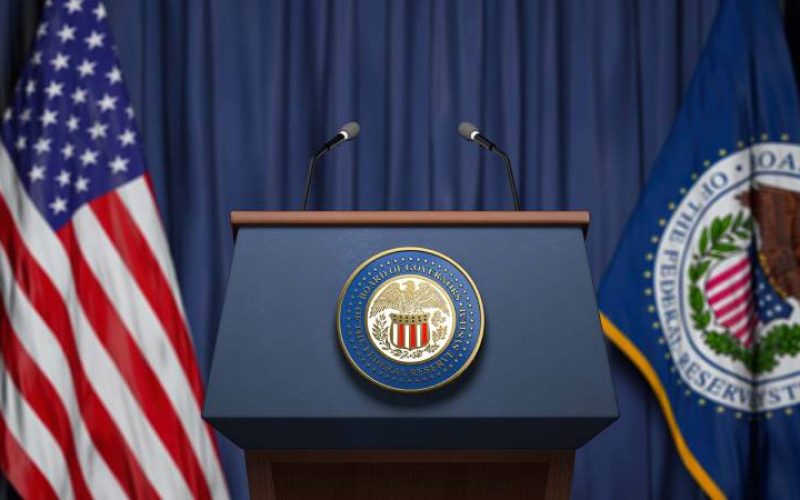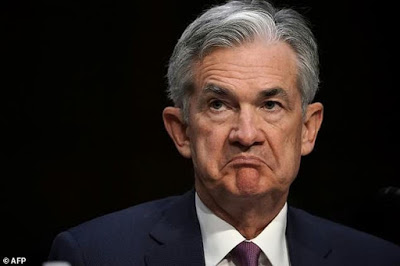by Kristina Hooper, Chief Global Investment Strategist, Invesco Canada
The U.S. Federal Reserve’s “dot plot” has become more aggressive on rate hikes, but will its predictions come to fruition? Kristina Hooper explains why it may be easier for the Fed to talk tough than to follow through.
As many of you know, I’m the mother of three teenagers. My husband and I have always tried hard to be good parents, but we recognize we excel in some areas of parenting more than others. One area where we’ve fallen short since our children were toddlers is a category I call “threats and punishment.” We have been far better at threats than we have with the ensuing punishment. It’s very easy for us to promise serious consequences and then hope and pray they never commit an infraction that would force such a penalty. In short, we “talk a big game” or, as my colleagues in Texas might describe it, we’re “all hat and no cattle.”
I suspect the U.S. Federal Reserve (Fed) is in a similar position right now — speaking loudly but hoping that big actions don’t become necessary. Let’s face it — it’s easy to talk tough as long as you don’t have to follow through. But sometimes tough talk can do the trick — if you signal to the market and the economy that you’re going to be resolute and do whatever it takes to reach your policy goal, sometimes you can get away with less than if you’d been more restrained in your rhetoric.
The Fed is talking tough
Indeed, Fed Chair Jay Powell warned last week, “… every meeting is a live meeting. And we’re going to be looking at evolving conditions. And if we do conclude that it would be appropriate to move more quickly to remove accommodation, then we’ll do so.”1 And this week he is sounding even tougher: In a speech to the National Association of Business Economists on March 21, Powell said the Fed must move “expeditiously” to get to the neutral rate2 — which can be defined as the theoretical level at which monetary policy is neither accommodative nor restrictive — or possibly move beyond the neutral rate to a more restrictive level. And he is not alone; other Federal Open Market Committee (FOMC) members have also been talking tough in recent days.
Sounds a lot like when we told our teenage daughter we would take away her phone if she didn’t get home by midnight on Saturday. Well, she blew in at 2 a.m., but is still in possession of her phone. I guess we just couldn’t handle the consequences of following through — the constant nagging/complaining/berating cycle that only teenagers can execute flawlessly. Similarly, I think the Fed is fearful of the consequences of its dot plot coming to fruition, which increases the risk of recession. But it is hoping that with a stronger commitment to a higher, faster rate path in the dot plot, it may well help keep inflation fears at bay, reducing the need for such a severe tightening.
As a reminder, the “dot plot” is the chart that the Fed uses to illustrate its outlook for the path of interest rates. So what is the Fed communicating with its dot plot right now? Back in December, it predicted there could be four rate hikes in 2022. Now, that has almost doubled to seven rate hikes. One member predicted that the federal funds rate would hit 3.1% by year end — that would mean multiple 50 basis point hikes throughout the year. Someone seems to be channeling their inner Paul Volcker.
Yes, a lot has changed since December. At that time, consumer inflation expectations (both one-year and three-year ahead) had peaked in the New York Fed’s Survey of Consumer Expectations and were actually easing modestly. Then Russia invaded Ukraine. Last week we got the new edition of that consumer survey, which illustrated that the Russia-Ukraine crisis and the ensuing increase in commodity prices is having an impact on consumer inflation expectations, with both one-year and three-year ahead measures having reversed course and moved higher. The Fed wants to ensure that longer term inflation expectations are well-anchored, which means it has to continue to talk tough and hope it maintains credibility, so that it doesn’t have to follow through with aggressive tightening. The yield spread on the two-year and 10-year U.S. Treasuries has compressed very substantially in recent months as the Fed has become more hawkish. If this yield spread were to go negative, it might indicate that a recession is in the cards, were the Fed to follow through and hike as much as some FOMC members are calling for.
Will tough words lead to action?
It’s easy to release an aggressive dot plot and it’s easy to talk tough in press conferences and speeches. But it’s a lot harder to actually raise rates seven times in the course of one year and four times in the following year and increase the risk of choking off the economic cycle. Hopefully the Fed will not have to be that aggressive. Among the reasons we could see core inflation peaking soon include: the reduction in federal spending that is occurring in 2022, the reduction in M2 money supply and, of course, the fact that inflation can be self-curing — high prices reduce demand which helps ease the pressure on prices. That doesn’t mean inflation will get down to 2% any time soon, but it could soon be moving in the right direction.
A more dovish tone in Europe
The Fed’s decision last week contrasts with what we saw from the Bank of England (BoE) and the European Central Bank (ECB). The BoE hiked rates for the third consecutive time — but adopted a more dovish tone, suggesting flexibility going forward because of the negative impacts to growth being created by the Russia-Ukraine crisis. And the ECB, while hastening the end of bond purchases, has struck a far more dovish tone than the Fed.
This makes sense — Europe is at the frontline of the hostilities not just geographically, but it is also far more directly exposed economically. The commodity price surge that has followed the war is already translating into sharp rises in European retail energy prices including auto fuel and home heating. German automakers as well as other European industries are also being hit by disruption to their Ukrainian component and software suppliers, while exports to Russia are being slashed by sanctions. And energy prices are now rising again as negotiations seem to be faltering and hostilities to be escalating. Further energy sanctions or embargoes are under discussion, which would hit European growth, probably harder than U.S. growth.
I continue to believe the Fed will be able to engineer a soft landing, although admittedly it is becoming an increasingly difficult task. The task is even more difficult for the eurozone, although I believe the ECB is making the right decisions to support the economy. Ditto for the Bank of England. Flexibility and data dependency will be critical in this challenging environment.
China signals market-friendly policies
Given my positive stance on China equities, I would be remiss if I didn’t mention developments in China in the past week. On Wednesday, Chinese Vice Premier Liu He essentially promised the rollout of market-friendly policies that should bolster economic growth. He also said that any regulatory actions should be better coordinated and should not threaten stability, “All policies that have a significant impact on capital markets should be coordinated with financial management departments in advance to maintain the stability and consistency of policy expectations.”3 I would expect more transparency and less surprise around upcoming regulation, but also less actual regulation going forward — and, in general, policies that support growth and help the Chinese economy achieve its goal of a 5.5% growth rate.4 Last week’s speech from China’s Vice Premier is an important development, and investors reacted accordingly, bidding up Chinese stocks and erasing some of the losses experienced in previous weeks. I remain positive on Chinese stocks, anticipating that fiscal and monetary policy winds should prove to be effective tailwinds for the economy.
Looking ahead, I believe global markets will continue to be influenced by central bank talk, developments in the Russia-Ukraine war, and readings of inflation and inflation expectations. I believe investors would be well served to anticipate volatility but not fear it, stay diversified and focus on longer term goals.
With contributions from Arnab Das
1 Source: Federal Reserve, transcript of press conference, March 16, 2022
2 Source: NBC News, “Powell says ‘inflation is much too high’ and the Fed will take ‘necessary steps’ to address,” March 21, 2022
3 Source: Reuters, “China vows to roll out market-friendly policies,” March 16, 2022
4 Source: Bloomberg News, “China Signals More Policy Support With 5.5% Growth Target,” March 5, 2022
This post was first published at the official blog of Invesco Canada.















